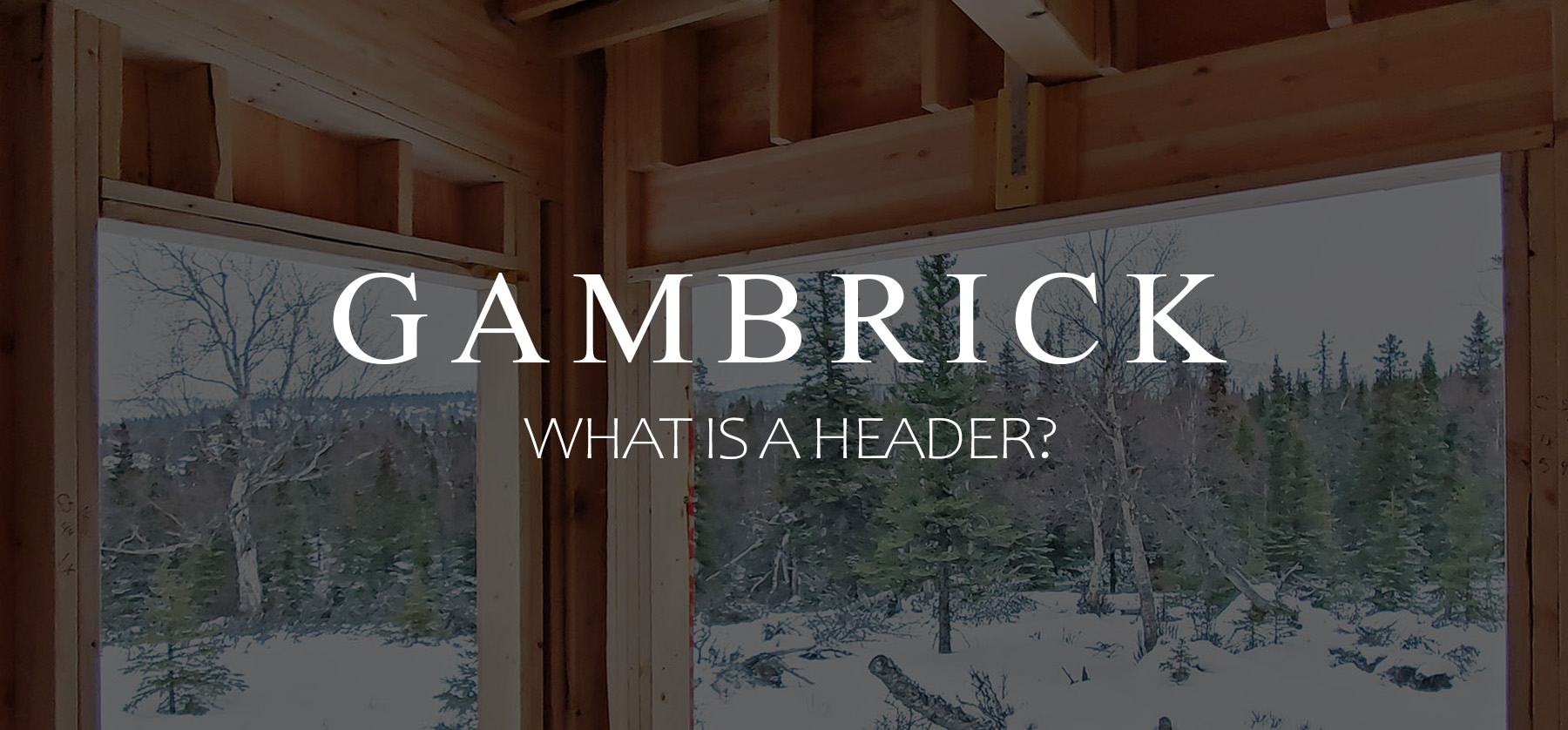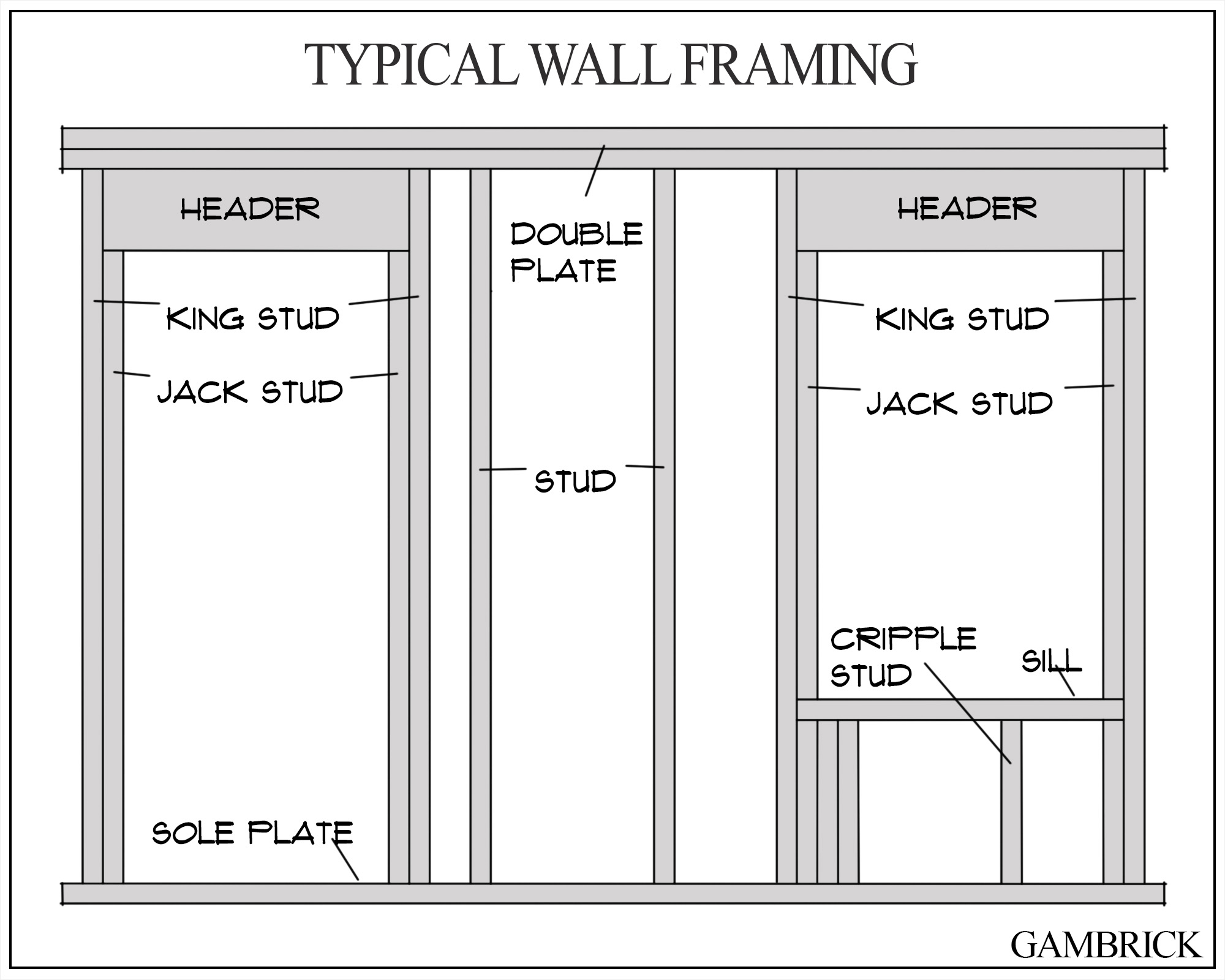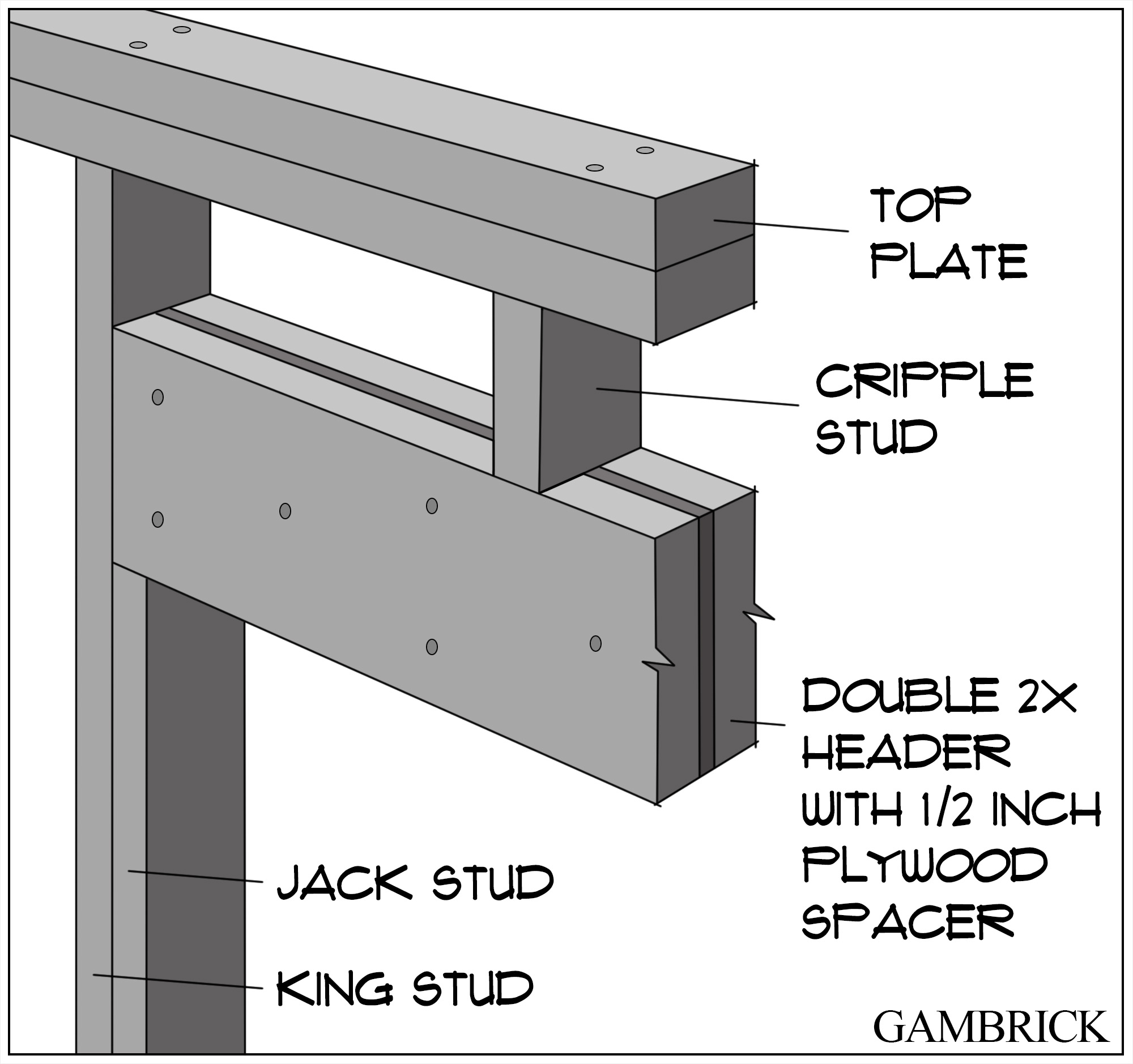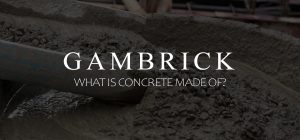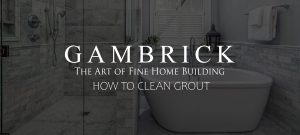What Is A Header?
If you’ve ever tried to do any residential framing then you’ve probably heard the very important term header. In this article we’ll be answering the questions what is a header and when do you need one? A header in construction is a beam installed over an opening which disperses the load placed on top to the sides. Windows and doors typically have a header on top to support the load above them. Without the header, weight would be placed on the window or door causing damage and/or total failure. On the sides of the header are framing members called king and jack studs. They transfer the load placed onto the header down to the foundation. As long as the header and studs are framed correctly, no weight will bear on the window, door or whatever else you place inside the opening.
Headers are a very important part of framing. Without them, builders wouldn’t be able to span distances or create voids for things like windows and doors.
Headers are only needed on structural load bearing walls where weight will be placed on top of the void. Non structural walls usually don’t require headers because there’s almost never weight placed above the opening. If there was, the wall would be considered load bearing.
Headers are sized based on both the length of the opening and the load. Then the architect also sizes the king and jack studs which support the header.
What Is The Purpose Of A Header In Construction?
The purpose of a header is to support the load placed atop it. They’re an important part of a home’s structural frame and are considered a type of beam.
A header is installed over any opening in a wall where windows and doors are later installed.
On the side of each header are studs, usually a jack and a king stud, which transfer the load placed atop the header down to the foundation.
Check out the illustration above. You can see how the load is dispersed to the sides of the opening, down the studs and onto the foundation. By framing a home this way, no weight is placed on top of the windows and doors. This is very important because load placed atop a window or door can cause damage and/or a total failure.
- A king stud.
- Jack stud (or trimmers) – where the load is actually placed or transferred
The load placed atop the header goes down the studs to a single bottom plate and then down to the foundation. Because the header is sized for both the load placed atop and the span, it shouldn’t sag or crack.
The king and jack studs keep the opening rigid and strong. The number and size of king and jack studs used is determined by the architect based on the load they carry.
I usually use one king stud and two jack studs to support my headers. Too much support isn’t a bad thing but too little can cause a failure.
When To Use A Header
Headers are a very important part of a home’s structural framing. Without them, builders wouldn’t be able to create openings in an exterior wall. That means no windows or doors.
There are several uses for a header when framing a home.
- Above windows and door openings This includes garage doors and basement Bilco doors.
- On the sides of a set of stairs. A header can be used to frame a stair opening between floors when the floor joists jun into the stairs. Reference the illustration above.
Most people think of headers as being made from wood. However, there are also types of headers made out of other materials like masonry and steel.
What’s The Difference Between A Header & A Beam?
A header is a type of beam. So they’re technically the same thing. However, even though a header is a beam it’s not called a beam. When a beam is used above an wall opening it becomes a header. So the difference between a header and a beam is it’s usage.
What Are Headers Made Of?
Most headers are made out of wood. However, they can also be made out of steel, engineered wood and masonry.
A header is a type of beam. The purpose of the beam is to span a distance and carry a load. So they need to be strong enough to do both things. That’s why it’s so important to properly size all your beams. If you use a beam too small to span the distance or carry the load on top, it could sag and/or fail.
In most residential construction, headers are made from either traditional lumber or engineered lumber. The most common size we use is either a double 2×10 or double 2×12. The longer the span and heavier the load, the thicker the beam should be.
Steel is a great material for beams, however it’s not that common unless the spans are really long or the load extremely heavy. In most residential homes, steel beams aren’t needed above windows and doors. But many modern homes with walls of glass use them for large spans.
Masonry beams are usually made out of concrete with steel rebar reinforcement. They’re very strong and can span long distances while carrying a heavy load. But these are also very uncommon in residential construction.
In residential work we use a form of beam called a lintel above windows and doors. The lintel is sized just like any other beam to span the required distance and carry the load above. In some cases we use a masonry lintel along with steel to help strengthen the lintel.
How To Build A Header
Building a wood header is very easy. Most are either engineered or standard lumber. The most common size we use when building homes is either a double 2×10 or double 2×12.
To build one, simply take two lengths of lumber and nail them together. For even more strength, place a sheet of plywood between the lumber. This also helps pad the wall which makes installing drywall easier if your wall studs are 2×6.
Engineered beams can either be ordered to the desired thickness or nailed together just like traditional lumber.
Once the beam is made, place it above the opening and support it by jack studs. The number of jack studs is determined by the architect or engineer. I usually use at least 2 jack studs and 1 king stud per side.
- Jack studs are installed under the header. They transfer the weight above down to the wall plate and foundation.
- King studs are installed along side the jack studs. They help stabilize the wall opening and create stability.
- Cripple studs can be installed above the header if there’s space between the beam and top plate.
- Lumber can be installed directly on top of or below the beam to made it fatter. This is used as a nailer for drywall or trim and not as a structural member.
Your set of blueprints should detail what size lumber you need to use for all headers. They may also list a nailing schedule for how the beam should be nailed together. In some cases, gluing the lumber together may also be required.
Summary: What Is A Header?
If you’ve ever tried to do any residential framing then you’ve probably heard the very important term header. In this article we’ll be answering the questions what is a header and when do you need one? A header in construction is a beam installed over an opening which disperses the load placed on top to the sides. Windows and doors typically have one on top which supports the load above. Without the header, weight would be placed on the window or door causing damage and/or total failure. On the sides of the header-beam are framing members called king and jack studs. They transfer the load placed onto the beam down to the foundation. As long as the opening is framed correctly, no weight will bear on the window, door or whatever else you place inside.
Headers are a very important part of framing. Without them, builders wouldn’t be able to span distances or create voids for things like windows and doors.
Header-beams are only needed on structural load bearing walls where weight will be placed on top of the void. Non structural walls usually don’t require them because there’s almost never weight placed above the opening. If there was, the wall would be considered load bearing.
Headers are sized based on both the length of the opening and the load. Then the architect also sizes the king and jack studs which support the header.
If you have any questions about framing, email any time.
